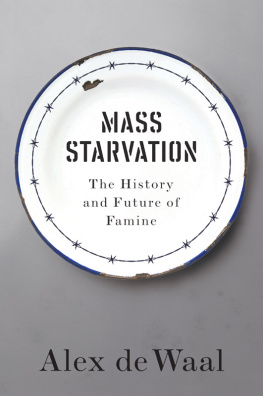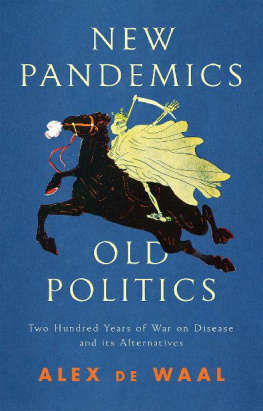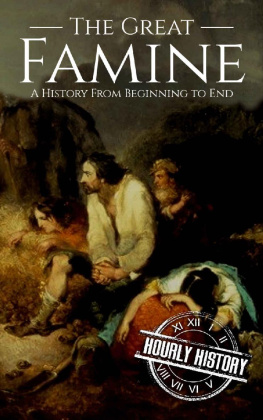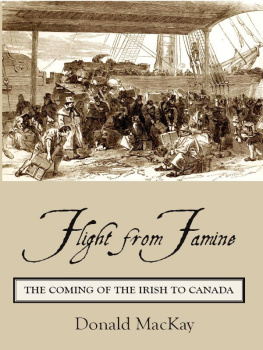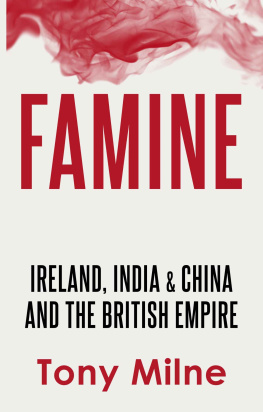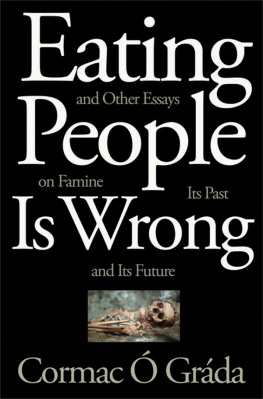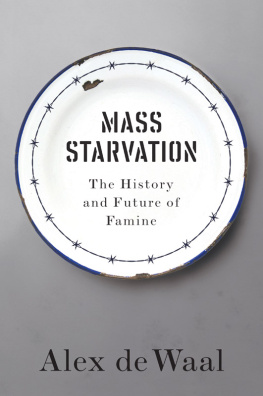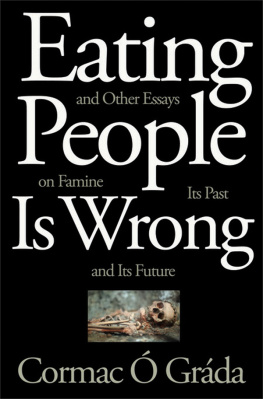OXFORD STUDIES IN AFRICAN AFFAIRS
General Editors
John D. Hargreaves, Michael Twaddle,
Terence Ranger
FAMINE THAT KILLS
Famine that Kills
Darfur, Sudan
Revised Edition
Alex de Waal


Oxford New York
Auckland Bangkok Buenos Aires Cape Town Chennai
Dar es Salaam Delhi Hong Kong Istanbul Karachi Kolkata
Kuala Lumpur Madrid Melbourne Mexico City Mumbai Nairobi
So Paulo Shanghai Taipei Tokyo Toronto
Copyright 1989, 2005 by Alex de Waal
First published in 1989 by Oxford University Press, Inc.
198 Madison Avenue, New York, New York 10016
www.oup.com
Oxford is a registered trademark of Oxford University Press
All rights reserved. No part of this publication may be reproduced,
stored in a retrieval system, or transmitted, in any form or by any means,
electronic, mechanical, photocopying, recording, or otherwise,
without the prior permission of Oxford University Press.
Library of Congress Cataloging-in-Publication Data
De Waal, Alexander.
Famine that kills : Darfur, Sudan, revised edition / Alexander de Waal
p. cm.
Bibliography: p.
ISBN-13 978-0-19-518163-0
ISBN 0-19-518163-8 (pbk.)
1. FaminesSudanDarfur. 2. Darfur (Sudan)Economic Conditions.
3. Darfur (Sudan)Rural conditions. 4. Food reliefSudanDarfur. I. Title.
II. Series.
HC835.Z9F335 1989 363.809627dc20 89-9254
1 3 5 7 9 8 6 4 2
Printed in the United States of America
on acid-free paper
ACKNOWLEDGEMENTS
This study originally formed a doctoral thesis at Oxford University. While doing the research I was supported by a grant from the Economics and Social Research Council, and for one year in Sudan by the Save the Children Fund. All interpretations of evidence and opinions in this book are of course entirely my own.
Thanks are due to many people. Wendy James, Peter Collett, Clyde Mitchell, and Megan Vaughan have provided academic supervision., Hussein Abdel Gadir and WSDC helped me to travel to Darfur, and Ibrahim Khatta put me up when I arrived. Fatih Sadig Jamil, Brian Kerr, Mohammed el Hassan Mukhtar, Abu Hamed Hasabollah, Mark Pearson, David Hughes, Jim Harvey, Marianne Nolte, Sabil Adam Yagoub, and Ibrahim Yahya Adam taught me most of what I known about Darfur. Mohammed A. Osman first persuaded me to work with Save the Children Fund. Thereafter, support from the office, transport, and field staff of SCF was critical to the success of this project. Particular mention should be given to Ruth Buckley, Rae McGrath, Wendy Fenton, Mick Dick, Chris Eldridge, Iain Russell, John King and family, Jane MacAskill, Peter Johnson, Bob Strickland, Iain Russell, Anne Lefond, Simon Mollison, Khalid Roy, Haj el Nur Ahmad, Julian Pitcher, Jon Dixon, Mike Pring, Ahmad Osman, Mohammed Ajeli, and many others: the work I did would not have been possible without them. While in the field I worked with many people: Mohammed Imam, Mohammed Abdel Gadir, Jaafar Ali, Mahadin Ahmad, Abdel Aziz Ahmad, Hafiz Abbaker and Mohammed el Nil during 1985; Abdalla Mohammed, Abdel Moniem Mohammed, Musa Ahmad, Gibriel Baraka, Omar Abdu, Ibrahim Hamed, Ahmad Ishag, Mojtaba el Zaki, Hamed Esh, Rob Stirling, and Stuart Lloyd during 1986. John Seaman in London provided intellectual stimulation and practical support. Atul Vadher has given much moral support. While analysing and writing I have received many useful comments in the seminars I have given in Khartoum, Oxford, Sussex, and Liverpool. A number of people have also provided information and advice, or commented in more detail on versions of the text, especially Ruth Buckley, David Hughes, Simon Mollison, Nigel Taylor, Stephen Devereux, David Keen, Ahmad Karadawi, David Turton, Matthew Lockwood, Louisa Gosling, Jay Kynch, Douglas Johnson, and Robert Chambers. Many thanks are due to my wife, Astier Mesghenna Almedom, for her tolerance and support. Above all, thanks is due to Malek Mohammed el Amin, my constant and invaluable companion in the field; a single credit cannot do justice to the contribution of his work.
*
Author and publisher would like to thank the Save the Children Fund for their generous subsidy of the production costs of this book.
PREFACE TO 2005 EDITION
The fifteen years since the publication of Famine that Kills have not been a good time for the people for whom Darfur is home. Twenty years since the drought that precipitated the famine of which this book is a study, the crisis in Darfur has been variously labelled the worlds worst humanitarian disaster and genocide. I left Darfur in 1987, optimistic that Darfurians resilience, tenacity, and readiness to innovate would ensure that they could prevail in the face of most adversities. But the famine of 1984-85 is matched and probably surpassed by the disaster now unfolding.
What has changed in the meantime? Has the humanitarian international learned to respond effectively to famines and crises of massacre and mass displacement? What augurs of the current violence can be detected in the ethnography of 198485? In this preface, I reflect upon famine theory and humanitarian practice and how they have changed over a decade and a half, and also on the developments that have brought a different kind of catastrophe down on the long-suffering people of Darfur.
Famine Theory and Humanitarian Practice
John Maynard Keynes is reputed to have responded to a criticism of inconsistency, when the facts change, I change my opinion. What do you do, sir? Much has changed, both in the nature of famines and in the capacity of humanitarian responses. Famine that Kills could not be published today without howls of protest over its methodological and analytical deficiencies. That, I hope, says as much about the considerable progress in the field of humanitarian studies in the intervening period as it does about the shortcomings of the book itself. But it is also distressing to see how much of the book is still relevant.
One benefit of the infancy of the field of famine studies in the 1980s was that it was still possible to write a book with a grand sweep. Today, each of the subjects addressed, namely the history of famine, livelihood strategies under stress, and the epidemiology of famine mortality, would be more than sufficient for a monograph in itself. By the same token, a full review of developments in the field over the last fifteen years would be long indeed. And such a review would need a special focus on the role of violencenot just structural or silent violence, but also manifest or loud violencein creating particularly virulent forms of famine.
The discipline of humanitarian studies has grown in size and sophistication since the 1980s, when an aspiring student of humanitarian affairs would have been hard pressed to find more than one or two academic institutions offering courses on the subject. Today, there are plentiful courses, diplomas and degrees, and their graduates are staffing the ranks of humanitarian agencies and donor institutions. The result is a huge increase in the knowledge base about famines and how to respond to them. (And I hope that my writings may have modestly contributed to this change.) There is a far greater readiness to canvass criticism and acknowledge difficulty. Nobility of purpose no longer confers immunity from sociological critique. Professional standards and codes of conduct have been debated, adopted, and revised.
But has increased expertise translated into more effective relief operations? Sadly, much is still wanting. In August 2003, more than 60,000 Darfurians fled to Chad. Almost a year later, the relief operation still lacks many essentials, including sound logistics and decent primary health care. With the last two decades investment in professionalizing relief responses, such shortcomings are inexcusable.
Next page

